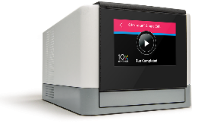

Additional fees apply for downstream Bioinformatics analysis services or consultations. The updated versions of the package, and a brief tutorial are available from the Park Lab site.Basic pricing for NextGen library construction and sequencing services is given below. The details of peak-calling algorithms were described in the initial manuscript. It supports the output of many short-read aligners, and can be used to determine a statistically significant set of binding peaks or broad regions of enrichment. The spp R package provides routines for processing ChIP-seq data. The implementation, custom sequence assemblies are available from the Park Lab server, which also provides a web interface for running the analysis. For details, please refer to the manuscript. The software, developed during PI's fellowship in the Park Lab, provides means to estimate the enrichment of repetitive elements in the short-read sequencing data.
#Harvard 10x chromium download#
cancerous tumors), however it is also capable of detecting instances of repeat insertions polymorphic among individuals.įor more details, please refer to the Tea manuscript, and the pipeline download page on the Park Lab site Its primary aim is to detect novel repeat insertions occurring in somatic tissues ( e.g. The Tea pipeline is designed to identify insertions of repetitive elements (such as LINE1 repeats or endogenous retroviral elements) in the human genomes. developed with the Park Lab during the PI's postdoctoral fellowship and shortly thereafter: It provides automatic data processing, pre-loaded interactive plots, a point-and-click interface to fully explore your data, together with the option to customize and export publishable-quality figures. The platform is designed specifically for biologists. Implement differential expression, subpopulationĬellenics is a user-friendly online tool for single cell RNA-seq data analysis (currently only supports 10X Chromium datasets).

Probabilistic mixture error model, which is used to The SCDE package provides routines for analysis of Please see the GitHub repository for hands-on tutorials and source code. We have developed the R package pagoda2 for analyzing and interactively exploring large-scale single-cell RNA-seq datasets. Please refer to the original publication for details. Demultiplexing of single-cell RNA-seq dataĭropEst is a pipeline for demultiplexing single-cell RNA-seq data, implementing additional corrections for accurate estimation of the molecular count matrices.This provides a basis for quantitative modeling of dynamic biological processes, such as cell differentiation, or perturbation response. Velocyto is a framework which predicts the movement of cells in transcriptional space, by estimating the first derivative of the transcriptional state - RNA velocity. Please see the publication for a detailed description and analysis examples, as well as the GitHub repository for hands-on tutorials and source code.

#Harvard 10x chromium software#
Please see the Kharchenko Lab's GitHub page for our latest software packages.


 0 kommentar(er)
0 kommentar(er)
